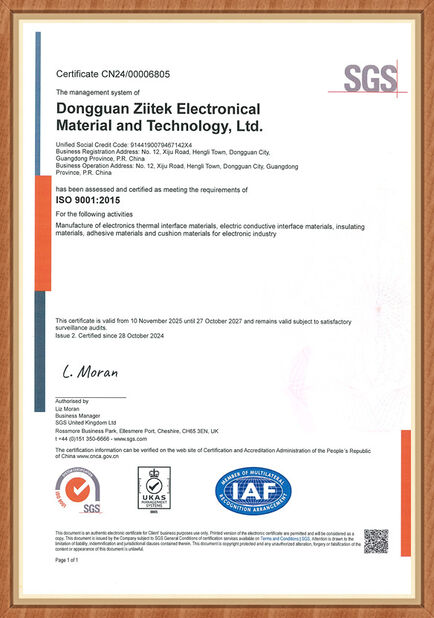Small Components, Big Impact: Thermal Conductive Silicone Sheets Provide an "Umbrella" for Heat Dissipation in Electronic Devices
In the current era where electronic devices are becoming increasingly thinner and more powerful, the power density of core components such as chips and processors is constantly rising. The resulting heat dissipation issue has become a key bottleneck restricting the performance release and service life of the devices. However, the seemingly insignificant "small component" - thermal silicone pads - is emerging as an important "protective umbrella" to solve the heat dissipation problem of electronic devices, thanks to its unique performance advantages.

From the perspective of the consumer electronics field, devices such as smartphones, laptops, and tablets have very compact internal spaces with densely packed components. Traditional cooling methods struggle to balance effective heat dissipation and space adaptation. Thermal silicone pads possess excellent flexibility and compressibility, allowing them to closely adhere to the irregular contact surfaces between chips, motherboards, and heat dissipation modules. They effectively fill the tiny gaps between these surfaces, eliminating the high thermal resistance caused by air gaps and significantly enhancing heat transfer efficiency. For instance, placing a thermal silicone pad between the processor and the metal frame of a smartphone can quickly conduct the heat generated by the processor to the frame and dissipate it outward, preventing the processor from throttling due to overheating and ensuring a smooth running experience for the phone. Using a thermal silicone pad between the graphics card and the heat dissipation fan module in a laptop helps the graphics card maintain stable cooling during high-load gaming or graphic processing scenarios, preventing lag and system crashes caused by excessive temperatures.

In the industrial electronics field, products such as industrial control computers, power equipment, and frequency converters are often exposed to complex working environments characterized by high loads, dust, and vibrations. This places more stringent demands on the stability and reliability of heat dissipation materials. Thermal silicone pads not only offer excellent thermal conductivity (typically with thermal conductivity coefficients ranging from 1.0 to 25 W/m・K, which can be selected based on different requirements), but also possess good insulation, resistance to high and low temperatures, and anti-aging properties. They can maintain stable performance within a temperature range of -45°C to 200°C, effectively isolating electrical interference between circuit components and heat dissipation structures, while also resisting the erosion of harsh environments on the heat dissipation system.

The seemingly small thermal silicone sheet, with its strong adaptability, stable performance and wide range of applications, plays an indispensable role in the heat dissipation system of electronic devices. It is like a silent guardian "umbrella", effectively reducing the temperature and burden of electronic devices through its excellent heat conduction ability, helping various electronic devices achieve a more stable and longer-lasting working state while operating at high performance, providing important material support for the continuous development of the electronic industry.

 Your message must be between 20-3,000 characters!
Your message must be between 20-3,000 characters! Please check your E-mail!
Please check your E-mail!  Your message must be between 20-3,000 characters!
Your message must be between 20-3,000 characters! Please check your E-mail!
Please check your E-mail! 

